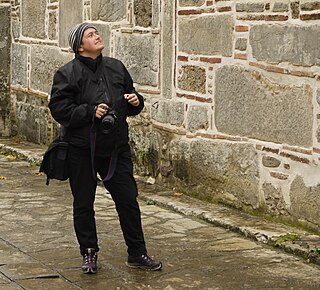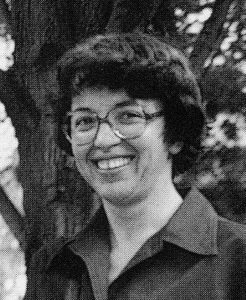Related Research Articles

The Hilandar Monastery is one of the twenty Eastern Orthodox monasteries in Mount Athos in Greece and the only Serbian monastery there. It was founded in 1198 by Stefan Nemanja and his son Saint Sava. St. Symeon was the former Grand Prince of Serbia (1166–1196) who upon relinquishing his throne took monastic vows and became an ordinary monk. He joined his son Saint Sava who was already in Mount Athos and who later became the first Archbishop of Serbia. Upon its foundation, the monastery became a focal point of the Serbian religious and cultural life, as well as assumed the role of "the first Serbian university". It is ranked fourth in the Athonite hierarchy of 20 sovereign monasteries. The Mother of God through her Icon of the Three Hands (Trojeručica) is considered the monastery's abbess.

Gregory Pakourianos was a Byzantine politician and military commander. He was the founder of the Monastery of the Mother of God Petritzonitissa in Bachkovo and author of its typikon. The monks of this Orthodox monastery were Iberians.
E. Ann Matter is former Associate Dean for Arts & Letters and Professor of Religious Studies Emerita at the University of Pennsylvania. She specializes in Medieval Christianity, including mysticism, women and religion, sexuality and religion, manuscript and textual studies, biblical interpretation and sacred music.

Alexander Alexandrovich Vasiliev was considered the foremost authority on Byzantine history and culture in the mid-20th century. His History of the Byzantine Empire remains one of a few comprehensive accounts of the entire Byzantine history, on the par with those authored by Edward Gibbon and Fyodor Uspensky.

Hosios Loukas is a historic walled monastery situated near the town of Distomo, in Boeotia, Greece. Founded in the mid-10th century, the monastery is one of the most important monuments of Middle Byzantine architecture and art, and has been listed on UNESCO's World Heritage Sites since 1990, along with the monasteries of Nea Moni and Daphnion.

Leoluca, also Leone Luca, Leo Luke of Corleone, Saint Leoluca, or Luke of Sicily was the abbot and wonderworker of the monastery of Mount Mula in Calabria, and a founder of Italo-Greek monasticism in southern Italy. He is venerated as a saint in the Roman Catholic and Eastern Orthodox churches.

Byzantine studies is an interdisciplinary branch of the humanities that addresses the history, culture, demography, dress, religion/theology, art, literature/epigraphy, music, science, economy, coinage and politics of the Eastern Roman Empire. The discipline's founder in Germany is considered to be the philologist Hieronymus Wolf (1516–1580), a Renaissance Humanist. He gave the name "Byzantine" to the Eastern Roman Empire that continued after the Western Roman Empire collapsed in 476 AD. About 100 years after the final conquest of Constantinople by the Ottomans, Wolf began to collect, edit, and translate the writings of Byzantine philosophers. Other 16th-century humanists introduced Byzantine studies to Holland and Italy. The subject may also be called Byzantinology or Byzantology, although these terms are usually found in English translations of original non-English sources. A scholar of Byzantine studies is called a Byzantinist.

The Magnaura was a large building in Byzantine Constantinople located next to the Great Palace. It was situated to the east of the Augustaion, close to the Hagia Sophia, and next to the Chalke Gate and has often equated by scholars with the building that housed the Senate.

Vazelon Monastery is a ruin located in the Black Sea region of Turkey. It was built in 270 and is 40 km (25 mi) south of Trabzon. Justinian I, a ruler of the Byzantine Empire, ordered the monastery to be repaired in 565, and it was renovated multiple times until the 20th century. The current structures date from the rebuilding in 1410.

Liz James FBA is a British art historian who studies the art of the Byzantine Empire. She is Professor of the History of Art at the University of Sussex.
Warren T. Treadgold is an American historian and specialist in Byzantine studies. He is the National Endowment for the Humanities Professor of Byzantine Studies at Saint Louis University. His interest in the political, economic, military, social, and cultural history of the Byzantine Empire extends to the Byzantine historians themselves. Treadgold has also taught at UCLA, Stanford, Hillsdale, Berkeley, and Florida International University.

Doula Mouriki was a Greek Byzantinologist and art historian. She made important contributions to the study of Byzantine art in Greece.
Janneke Ellen Raaijmakers was a Dutch historian of the Middle Ages who specialized in the formation of monastic communities and the role of religious objects in the cult of the saints, with a particular focus on Fulda and the Fulda monastery, founded by Saint Boniface.
Leslie Brubaker is an expert in Byzantine illustrated manuscripts. She was appointed Professor of Byzantine Art at the University of Birmingham in 2005, and is now Professor Emerita. Her research interests includes female patronage, icons and the cult of the Virgin Mary. She was formerly the head of Postgraduate Studies in the College of Arts and Law, University of Birmingham. Professor Brubaker is the Chair of the Society for the Promotion of Byzantine Studies. Her work is widely stocked in libraries around the world.

Nina G. Garsoïan was a French-born American historian specializing in Armenian and Byzantine history. In 1969 she became the first female historian to get tenure at Columbia University and, subsequently, became the first holder of Gevork M. Avedissian Chair in Armenian History and Civilization at Columbia. From 1977 to 1979, she served as dean of the Graduate School of Princeton University.
Erica Cruikshank Dodd is a Canadian academic who has published several studies on Byzantine, Middle Eastern and Islamic art. She was Professor of Byzantine and Islamic Art at American University of Beirut, Lebanon, and at the University of Victoria, British Columbia, Canada.
The monastery of Theotokos Euergetis was a monastery in the European suburbs of the Byzantine capital, Constantinople, established in 1049 and surviving until the 13th century.
Marios Philippides was an American historian who was Emeritus Professor in the Department of Classics at the University of Massachusetts-Amherst.
This is a select bibliography of post World War II English language books and journal articles about the history of Russia and its borderlands from the Mongol invasions until 1613. Book entries may have references to reviews published in academic journals or major newspapers when these could be considered helpful.
Jean-François Marie Joseph Louis Lemarignier was a French medieval historian.
References
- ↑ Author biography from back cover of The Hypotyposis of the Monastery of the Theotokos Evergetis, via Google Books, retrieved 2022-01-26
- ↑ "Hon. Secretary's Business" (PDF). Society News (19). Society for the Promotion of Byzantine Studies: 6. November 2012.
- ↑ Reviews of The Hypotyposis of the Monastery of the Theotokos Evergetis:
- Olivier Delouis, Revue des études byzantines,
- Peter Hatlie, The English Historical Review, doi : 10.1093/ehr/ceu219, JSTOR 24474617
- Catherine Holmes, History, JSTOR 24809713
- Glenn Peers, The Medieval Review,
- Alice-Mary Talbot, Speculum, doi : 10.1017/S0038713412003508, JSTOR 23488668
- ↑ Reviews of Monks and Laymen in Byzantium:
- John L. Boojamra, Church History, doi : 10.2307/3169475, JSTOR 3169475
- Jean-Claude Cheynet, Revue des études byzantines,
- Steven Fanning, The Historian, JSTOR 24451614
- Charles A. Frazee, The American Historical Review, doi : 10.2307/2650802, JSTOR 2650802
- Andrew Louth, The Journal of Theological Studies, JSTOR 23966830
- Margaret Mullett, Byzantine and Modern Greek Studies, doi : 10.1179/byz.1997.21.1.278
- Joseph A. Munitiz, The Journal of Hellenic Studies, doi : 10.2307/632621, JSTOR 632621
- Jonathan Shepard, The English Historical Review, JSTOR 577119
- John Thomas, Speculum, doi : 10.2307/2886935, JSTOR 2886935
- Mark Whittow, The Journal of Ecclesiastical History, doi : 10.1017/S0022046900015189